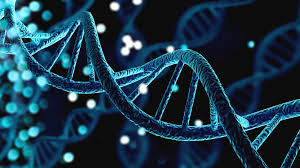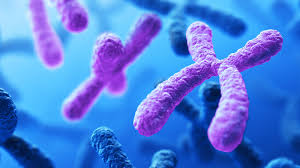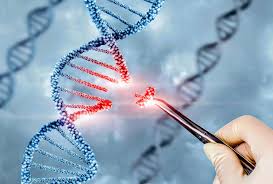Having read through the Course Guide, the next step is to go through this first article of the course, which is fundamental to understanding genetics.
This article provides definitions of key terminologies used in genetics, as well as a review of the contributions made by scientists to the field of genetics and animal breeding. Let us now explore the study objectives for this article.
Read Also: The Alfalfa Petals: Economic Importance, Uses, and By-Products
Distinction Between Animal Genetics and Animal Breeding

Animal genetics is the science that deals with the study of heredity and variation. It is a branch of biology that examines how traits (characteristics) are transferred from parents to their offspring. The word “genetics” is derived from the Greek word “gen,” meaning generative, and “genesis,” meaning beginning.
Animal breeding refers to the application of the principles of animal genetics to improve economically important characteristics (traits) in domestic animals. Examples of such traits include milk production in dairy cows, egg production in chickens, or meat yield in beef cattle.
The advantages of animal breeding include the improvement of existing traits, the production of new traits, and the development of individuals with superior merits.
Read Also : How to Plant Fruit Trees for Optimum Performance
Definitions of Other Genetic Terminologies in Animal Breeding

1. Trait: A trait refers to a characteristic or feature. Genetic traits are passed down through genes from parents to offspring.
2. Gene: A gene is the smallest unit of inheritance. It is the hereditary material that controls which trait should be expressed in an animal. Genes occur in pairs, with offspring inheriting one copy from each parent.
Recently, the term “gene” has been defined as a specific sequence of nucleotide bases, whose sequences carry the information required for constructing proteins.
These proteins provide the structural components of cells and tissues, as well as enzymes for essential biochemical reactions. The human genome is estimated to comprise at least 100,000 genes.
3. Allele: An allele refers to a different form of a gene. Genes occur in pairs (e.g., AA, AB, BB), with one allele inherited from each parent. The uppercase letter (R) represents a dominant gene, while the lowercase letter (r) represents a recessive allele.
4. Dominant: A dominant gene is the stronger of the two genes expressed in a hybrid. It is always represented by an uppercase letter (e.g., R).
5. Recessive: A recessive gene or allele shows up less often in a cross and is represented by a lowercase letter (e.g., r).
6. Genotype: Genotype refers to the genetic combination for a given trait (e.g., RR, Rr, rr). It represents the genetic makeup of an individual. Genotypes can be homozygous (e.g., RR, rr) or heterozygous (e.g., Rr).
7. Homozygous Genotype: A homozygous genotype involves a gene combination of two dominant (RR) or two recessive (rr) alleles. It represents identical alleles. A homozygous individual is also referred to as purebred.
8. Heterozygous Genotype: A heterozygous genotype involves a gene combination of one dominant and one recessive allele (e.g., Rr). Heterozygotes are also known as hybrids.
9. Phenotype: The phenotype refers to the physical characteristics that result from a genotype (e.g., red or white color).
10. Heredity: Heredity refers to the transmission of traits from parents to offspring.
11. Variation: Variation refers to the similarities and differences in creation, behavior, traits, etc.
In this article, the definitions of genetics and animal breeding were discussed, and the distinction between the two was highlighted. Several important genetic terminologies were also defined to refresh and update knowledge.
A solid understanding of these terms is crucial for successfully attempting the questions in the Assignment section.
Do you have any questions, suggestions, or contributions? If so, please feel free to use the comment box below to share your thoughts. We also encourage you to kindly share this information with others who might benefit from it. Since we can’t reach everyone at once, we truly appreciate your help in spreading the word. Thank you so much for your support and for sharing!

